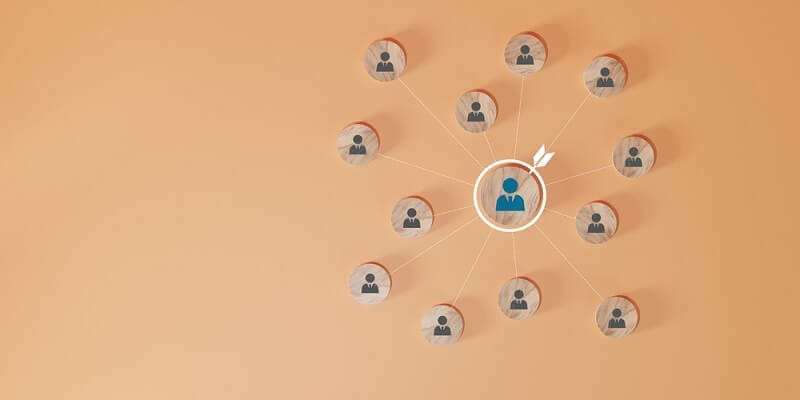
Ask any business owner what keeps them up at night and chances are you’ll hear the same thing: finding new customers. It sounds simple when you put it like that, but in reality, it’s one of the hardest parts of running a company today. Marketing budgets stretch thin, customers scroll past ads like they don’t exist, and the competition? It feels endless.
This is why understanding customer acquisition challenges isn’t just a nice-to-have, it’s essential. If you don’t crack this, growth slows down. And when growth slows down, everything else gets harder.
Let’s break it down in plain English. What’s stopping businesses from attracting new people, and what can they realistically do about it?
Before we jump into the messy parts, let’s pause for basics. What is customer acquisition? In its simplest form, it’s the act of getting someone who doesn’t know your brand to eventually become a paying customer. Sounds easy enough, right? But there’s a journey behind it.
That journey is often described as the customer acquisition funnel. Imagine a wide funnel. At the top, you have awareness—people hearing about you for the first time. A bit further down is interest, then consideration, and finally the narrowest part, the purchase. The hard truth? Most people drop off before they ever reach the bottom.
And that’s where the challenges begin.
Every industry has its quirks, but most businesses run into the same roadblocks when it comes to new customers. Let’s talk about the big ones.
We’re living in an age of choice overload. Customers can open Google and find ten alternatives to you in seconds. This makes standing out incredibly tough. Clever branding helps, but it’s not enough. You need something unique—pricing, story, values, or maybe service—that makes people stop and take notice.
Anyone who ran Facebook ads ten years ago will tell you how cheap it was compared to now. The same goes for Google search ads. Today, those clicks can cost a small fortune. Without a clear customer acquisition marketing strategy, companies end up pouring money into campaigns and crossing their fingers. Spoiler alert: that rarely works.
This one frustrates businesses the most. People don’t buy instantly. They research, compare, read reviews, and ask friends. The decision-making process is longer than ever. If you’re not consistently nurturing those leads—emails, content, gentle reminders—they’ll wander off to a competitor.
Here’s another tricky one. Everyone says retention is cheaper than acquisition, and that’s true. But if you only focus on retention, you’ll eventually plateau. On the flip side, chasing new customers while ignoring loyal ones creates a leaky bucket. The smartest businesses combine customer acquisition and retention strategies so the two work together instead of against each other.
With analytics dashboards everywhere, you’d think businesses have it easier. The opposite is often true. Too much data makes teams freeze. Which numbers actually matter? Conversion rate? Click-through rate? Lifetime value? Without clarity, companies waste time tracking everything and fixing nothing.
Trust is fragile online. Customers are wary of scams, fake reviews, and companies that overpromise. Gaining credibility takes time, transparency, and consistency. It’s no longer enough to say, “We’re the best.” You have to prove it with social proof, content, and real customer experiences.
It’s tempting to think these problems can be solved with luck or the occasional viral campaign. They can’t. Winning new customers requires solid customer acquisition strategies that fit your industry, your audience, and your budget.
The businesses thriving today aren’t necessarily the biggest. They’re the ones that adapt quickly, experiment, and learn from mistakes without fear. Let’s talk about what works in practice.

You can’t just throw money at ads and hope. A good customer acquisition marketing strategy pulls together different channels into one system. That could mean SEO, content marketing, social ads, influencer partnerships, and email campaigns. The point is consistency.
Think about your own habits. Do you buy something the first time you see it? Probably not. You might read an article, then see a social ad, then notice a friend using the product. Only after several touchpoints do you take action. That’s how your customers behave too.
Content plays a starring role here. Blog posts, guides, videos, even podcasts—anything that helps customers learn. People want to be educated, not shouted at. Brands that explain and guide often beat those that only push “buy now” messages.
On A Related Note: 2025's Most Searched Services Online: Trends You Must Know
Let’s go back to the funnel for a second. Each stage has its own hurdles.
At the awareness stage, the challenge is visibility. SEO, ads, PR—anything to get your name out there.
At the interest stage, you need engagement. That might be a newsletter sign-up, a free webinar, or a demo video.
At the decision stage, reassurance matters. Reviews, guarantees, testimonials—they reduce risk in the buyer’s mind.
At the action stage, make it easy. A clunky checkout or complicated sign-up form kills conversions faster than you’d think.
Optimising this funnel isn’t glamorous, but it’s where growth comes from. Businesses that treat it like a system rather than a guessing game usually win.
Here’s a mistake too many businesses make: treating retention and acquisition like separate worlds. In reality, they should fuel each other.
Referral programs are a good example. Your loyal customers bring in new ones, which lowers your acquisition cost and strengthens retention at the same time. Same goes for personalised emails—when existing customers feel valued, they not only return but also recommend you. That’s what smart customer acquisition and retention strategies look like.
Theory is great, but let’s ground this in practical steps.
Know your audience. Not every lead is worth chasing. Focus on the people most likely to buy.
Test everything. Headlines, offers, even colours on a button. Small tweaks often lead to big results.
Don’t forget mobile. If your site doesn’t work on a phone, you’re losing customers daily.
Use storytelling. Customers remember stories, not product specs. Share your journey.
Collaborate. Partnerships expose you to audiences you’d never reach alone.
Stay transparent. Overpromising kills trust. Be clear, even if it means admitting limits.
It’s easy to get lost in dashboards and funnels, but at its core, customer acquisition is about people. Behind every click is someone wondering, “Do I trust this brand? Does it solve my problem?”
That’s why empathy is so important. Answer quickly when they ask a question. Own up if something goes wrong. Add value before expecting money. It sounds basic, but it’s what separates forgettable companies from the ones people recommend.
The landscape will keep shifting. Privacy rules will change, AI will shape campaigns, new platforms will rise and fall. But the fundamentals stay the same. Know your audience, earn their trust, and guide them step by step through the journey.
It won’t remove all the roadblocks, but it will give you a fighting chance against the toughest customer acquisition challenges.
Further Reading: How Niche Community Shape Local Trends and Influence in 2025
Acquiring customers has never been easy, and it won’t magically become simple. But businesses that approach it with patience, creativity, and solid systems will find a way. The goal isn’t to win everyone. It’s to win the right ones—and to do it in a way that builds long-term trust.
So if you’re wrestling with acquisition right now, don’t panic. Focus on your funnel, refine your customer acquisition strategies, and balance your efforts with retention. Growth doesn’t come from shortcuts. It comes from consistent effort, small wins, and remembering that customers are people first.
This content was created by AI